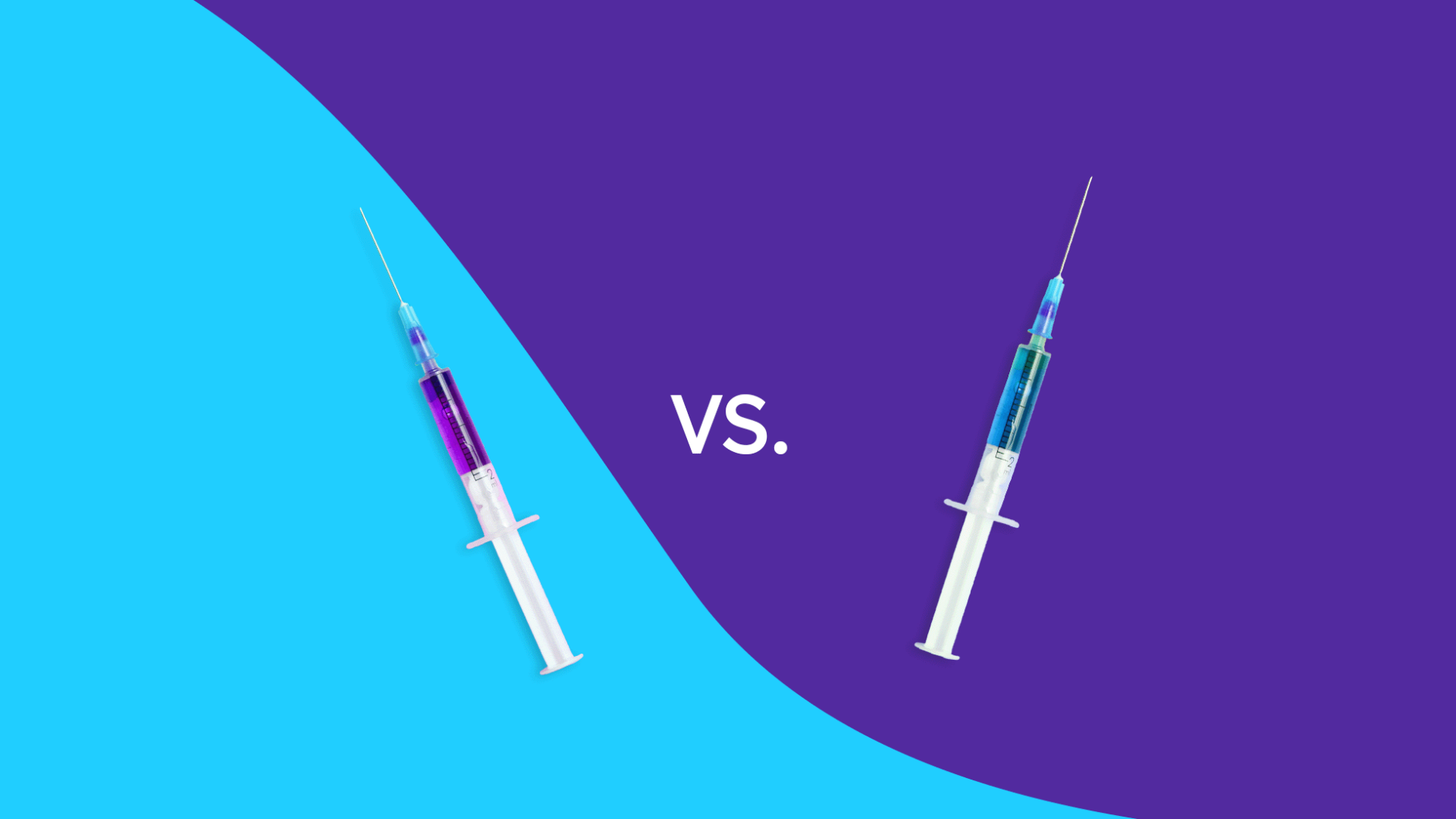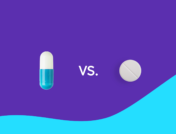Key takeaways
Aimovig is a once-monthly prescription medication used to prevent migraine. It is available in two doses, 70 mg and 140 mg.
The 140 mg dose may offer more benefits than the 70 mg dose, especially for those who have not responded well to other treatments.
Aimovig 140 mg costs the same as Aimovig 70 mg.
Consult your healthcare provider to determine the most appropriate dose of Aimovig for your migraine prevention needs.
Aimovig (erenumab-aooe) is a once-monthly injectable prescription medication used for the prevention of migraine in adult patients. The brand-name drug was approved by the Food and Drug Administration (FDA) in 2018 and belongs to a class of drugs known as calcitonin gene-related peptide (CGRP) receptor antagonists, or CGRP receptor antagonists. It blocks a protein called CGRP, which is linked to migraine pain and inflammation. By doing so, Aimovig helps reduce how often and how severely migraine attacks occur.
Aimovig dosage
Aimovig is typically self-administered by the patient, after proper training, or administered by a caregiver. Each autoinjector contains a single dose of Aimovig and should be discarded after use. Aimovig is available in the following injectable formulations:
- 70 mg/mL single-dose prefilled autoinjector
- 140 mg/mL single-dose prefilled autoinjector
The recommended dose of Aimovig is either 70 mg or 140 mg, injected once per month. Note that Aimovig is used to prevent migraine. It is not used for acute treatment to stop a migraine. The medicine is administered by subcutaneous injection, under the skin of the thigh, abdomen, or upper arm. Aimovig should not be injected into skin that is hard, red, bruised, or tender.
Regardless of dosage, Aimovig should be stored in the original cartin in the refrigerator, protected from light until it is ready to use. Let it come to room temperature for at least 30 minutes once you take it out of the refrigerator and are ready to use it. You must use it within seven days of bringing it to room temperature. Discard it after seven days.
Aimovig 70 mg vs. 140 mg: Which is better for migraine prevention?
Your healthcare provider’s choice of dosage may depend on how well previous migraine treatments have worked for you.
A review of clinical trials published in 2019 found that the 140 mg dose of Aimovig might offer more benefits compared to the 70 mg dose for individuals who have not had success with other preventive migraine treatments. Researchers observed that patients with a history of failed treatments experienced better results with the higher dose, both for episodic and chronic migraine.
Another clinical study published in 2022 reviewed various sources to compare the effectiveness and safety of the 70 mg and 140 mg doses of Aimovig. This review found that, while the 70 mg dose is usually the starting point in treatment, the 140 mg dose may offer more benefits, especially for patients who have not responded well to other treatments or have high medication use.
Episodic migraine (EM) involves having 0 to 14 headache days per month, while chronic migraine (CM) is characterized by 15 or more headache days per month. In some cases, EM can progress to CM. The 2022 study highlighted that the higher 140 mg dose generally provides greater benefits in reducing monthly migraine days and preventing the progression from EM to CM. Importantly, there are no additional downsides or risks of using the higher 140 mg dose. For those who start on the 70 mg dose but do not see enough improvement, moving to the 140 mg dose (under the guidance of a healthcare provider) might be a better option before trying a different medication. Overall, this suggests that the 140 mg dose could be more effective for some patients.
Aimovig 70 mg price vs. Aimovig 140 mg price
As of September 2024, the average retail price of Aimovig, regardless of dosage, is $1,064 for 1, 1 mL pen of Aimovig, which is a one-month supply. If you have insurance, you could pay much less, although copay and coinsurance amounts vary by plan. Check with your insurance provider to determine your out-of-pocket cost.
Medicare typically covers Aimovig, with 69% of Medicare beneficiaries paying $20 or less per month and the remaining 31% paying an average of $117 per month.
According to Amgen, the manufacturer of Aimovig, most Medicaid beneficiaries pay $10 or less per month, with only 1% paying an average of $128 monthly.
There are other ways to save on Aimovig as well. With a SingleCare prescription discount card, you could compare Aimovig costs at participating pharmacies across the country where you can save significantly. With an Aimovig coupon from SingleCare, you could pay $738 instead of $1,064 for Aimovig without insurance.
Side effects of Aimovig 70 vs. 140 mg
The side effects of Aimovig 140 mg are the same as the side effects of Aimovig 70 mg. Common side include injection site reactions (pain, redness, and itching) and constipation. In rare cases, severe constipation could occur, which may require hospitalization. Rarely, serious adverse events, such as allergic reactions, may occur and require emergency medical attention. New or worsening high blood pressure may also occur.
Bottom line
The choice between Aimovig 70 mg and 140 mg depends on your treatment needs. The 140 mg dose might work better, especially if past treatments have not been effective. It offers more benefits for reducing migraine days and preventing episodic migraine from progressing to chronic migraine. The 140 mg dose does not carry additional safety risks compared to the 70 mg dose. Talk to your healthcare provider to determine which dose is best for you.
Sources
- The appropriate dosing of erenumab for migraine prevention after multiple preventive treatment failures: a critical appraisal, The Journal of Headache and Pain (2019)
- Erenumab dosage for migraine prevention: An evidence-based narrative review with recommendations, Headache (2022)
- Defining the differences between episodic migraine and chronic migraine, Current Pain and Headache Reports (2012)
- Paying for Aimovig, Amgen









